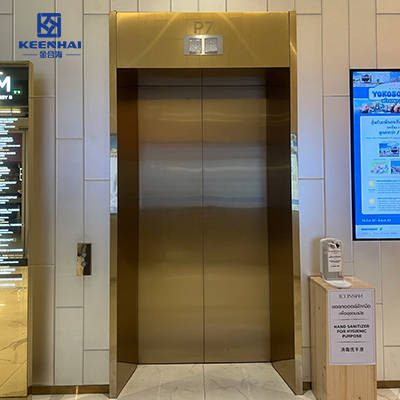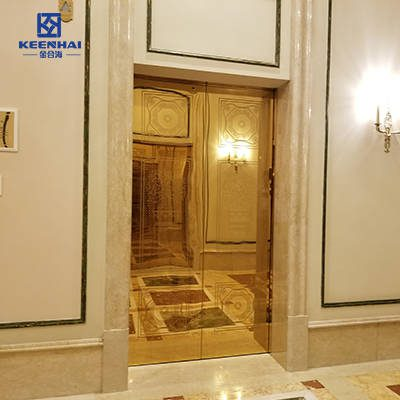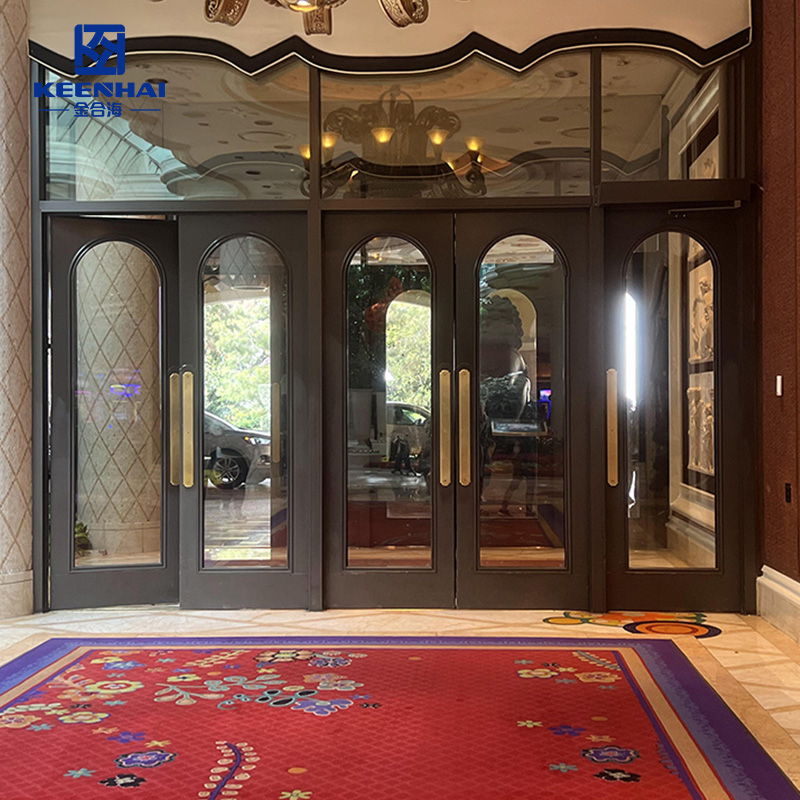Compared to traditional stainless steel, PVD-coated panels resist fingerprints, corrosion, and fading. They maintain a vibrant finish over time, making them perfect for elevators, hotel lobbies, or paslanmaz çelik dış duvar applications.
1. Understanding the Basics
1.1 What Is Stainless Steel Made Of?
Stainless steel is basically iron mixed with a few key elements that make it stronger and more resistant to rust. The magic ingredient is chromium, usually around 10–20%, which forms a thin protective layer that keeps moisture and air from damaging the surface. Add a bit of nickel and sometimes molybdenum, and you get a material that’s not only tough but also sleek and easy to maintain.
It’s why you see stainless steel used everywhere—from kitchen counters to building facades. A simple stainless steel sheet is enough to create a clean, modern look while standing up to years of use. It’s strong, easy to clean, and keeps that shine even in humid environments.
| Stainless Steel Type | Chromium (Cr) | Nickel (Ni) | Typical Use |
|---|---|---|---|
| 304 | 18–20% | 8–10% | Interiors, furniture |
| 316 | 16–18% | 10–14% | Outdoor structures |
| 430 | 16–18% | — | Budget-friendly indoor use |
1.2 What Does “PVD Steel” Actually Mean?
When people say PVD steel, they’re talking about PVD stainless steel — regular stainless steel with a thin, decorative coating applied through a process called Physical Vapor Deposition. The metal is placed inside a vacuum chamber where materials like titanium or zirconium are vaporized and bonded to the surface. The result? A richer color, a harder surface, and a more luxurious finish.
This type of PVD stainless steel is often used in hotel lobbies, elevators, and storefronts, where both beauty and durability matter. It’s not paint or plating — the coating becomes part of the steel itself, so it doesn’t peel or fade. Designers love it because they can choose from finishes like gold, black, or bronze without sacrificing corrosion resistance.
| Özellik | Regular Stainless Steel | PVD Stainless Steel |
|---|---|---|
| Color | Silver only | Gold, bronze, black, more |
| Scratch Resistance | Standard | 2–3× higher |
| Maintenance | Needs polishing | Easy to clean |
1.3 How PVD Coating Is Applied to Stainless Steel
The process of applying a PVD coating sounds complex, but it’s all about precision. Here’s how it typically goes:
-
Preparation: The stainless steel sheets are cleaned with special equipment to remove oil and dust.
-
Vacuum Chamber: The clean panels are placed in a vacuum chamber to eliminate air and moisture.
-
Metal Vaporization: Metals like titanium are heated until they turn into vapor.
-
Deposition: That vapor bonds to the steel surface, forming an ultra-thin yet extremely strong coating.
-
Finishing: Once cooled, the panels are polished or brushed to achieve the final texture and tone.
This method produces consistent, high-end finishes you often see in luxury interiors Ve modern building exteriors. For example, an exterior wall made from stainless steel offers that same glossy look with extra protection against rain and pollution — perfect for city architecture.

2. Composition and Structural Differences
When comparing PVD stainless steel with traditional stainless steel, the biggest difference lies beneath the surface — quite literally. While both start from the same stainless-steel substrate, the physical vapor deposition (PVD) process adds a microscopically thin, ultra-hard coating that changes the material’s structure, color, and performance.
2.3 Surface Hardness and Microstructure Changes
PVD stainless steel undergoes a structural transformation at the surface level. The high-energy ion bombardment during coating compacts the outer layer, reducing microscopic pores and creating a smoother, denser surface. This process can increase surface hardness by up to 200%–300%, depending on the coating material.
| Property | Traditional Stainless Steel | PVD Stainless Steel |
|---|---|---|
| Surface Hardness (HV) | 150–200 HV | 450–800 HV |
| Korozyon Direnci | Good | Excellent |
| Scratch Resistance | Moderate | High |
| Color Options | Limited (silver/gray) | Wide range (gold, bronze, black, rose) |
This structural upgrade isn’t just technical — it has real-world impact. For instance, a PVD stainless steel sheet used in hotel lobbies or airports can resist fingerprints and scratches far better than standard stainless panels, maintaining a pristine appearance even in high-traffic areas.
The smoother microstructure also means dirt and water have less room to adhere, making cleaning easier and preventing oxidation over time. That’s why architects often choose PVD-coated panels for paslanmaz çelik dış duvar systems — they look premium, perform better, and age beautifully.
In short, while both materials share the same DNA at their core, PVD stainless steel is a next-level evolution — engineered for aesthetics, endurance, and performance in modern architecture. The added PVD layer turns ordinary stainless steel into something extraordinary, offering not just beauty but measurable, long-term value.

3. Appearance and Finish Comparison
When it comes to looks and tactile feel, the difference between PVD stainless steel and traditional stainless steel is instantly clear. The PVD process transforms standard metal into a visually rich, color-stable material with deep reflections and enhanced durability — ideal for designers who want both beauty and longevity.
3.1 Color Options and Reflectivity
Traditional stainless steel offers only a few shades — silver, brushed gray, or mirror polish — and often gives a cool, industrial tone. In contrast, PVD stainless steel provides an impressive color palette achieved through the vacuum deposition of compounds like titanium nitride or zirconium oxide. The result is stable, rich hues such as gold, bronze, black, rose gold, and champagne, all fused at the molecular level — not painted, not plated.
These finishes don’t chip or fade, even under UV exposure. Depending on the coating parameters, PVD can deliver either mirror-like reflectivity veya soft satin tones, allowing precise control over how light interacts with the surface. This flexibility makes it perfect for luxury hotels, architectural façades, or custom furniture, where both tone and reflection play key aesthetic roles.
3.2 Texture and Smoothness of the Surface
The texture of a surface directly affects both its appearance and maintenance. Standard stainless steel often shows visible brushing lines or grain marks from mechanical finishing. In contrast, PVD-coated stainless steel has an ultra-smooth and sealed surface thanks to its vacuum coating process. This eliminates micro-porosity, resulting in a denser and cleaner look.
When you touch a stainless steel sheet with a PVD coating, it feels almost silky — smooth, reflective, and solid. This high-quality texture enhances light distribution and reduces the accumulation of dust and stains. For architectural cladding or interior wall panels, the effect is both aesthetic and functional, maintaining a polished appearance with minimal upkeep.
| Property | Traditional Stainless Steel | PVD Stainless Steel |
|---|---|---|
| Color Range | Limited (mainly silver tones) | Wide (gold, black, bronze, rose, etc.) |
| Reflectivity | High but harsh | Adjustable – from mirror to soft satin |
| Surface Smoothness | Visible grain lines | Ultra-smooth and sealed surface |
| Dayanıklılık | Prone to scratches | Hard, wear-resistant coating |
| Aesthetic Longevity | Moderate | Long-term color stability |
3.3 Fingerprint and Scratch Resistance
Fingerprints and light scratches are common issues on regular stainless steel, especially on mirror finishes used in elevators or decorative panels. The PVD layer solves this problem by forming a low-friction protective barrier that resists both smudges and abrasion. Fingerprints become much less visible, and routine cleaning only requires a gentle wipe — no special solvents or polishes needed.
This extra hardness also gives paslanmaz çelik dış duvar systems an edge in public and commercial spaces. Even in high-contact zones such as hotel lobbies, airports, or store entrances, PVD panels maintain their fresh, uniform appearance for years. The color doesn’t peel or fade because it’s part of the metal itself, not a surface coating.
For designers and architects, that means a consistent finish across large installations, reduced maintenance costs, and a visibly more luxurious result — exactly why decorative PVD finishes have replaced traditional brushed metal in premium projects worldwide.

4. Durability and Performance
Durability is where PVD stainless steel truly outshines regular stainless steel. While traditional stainless steel is strong and corrosion-resistant, the PVD coating adds an extra layer of protection, enhancing performance under harsh conditions and extending the material’s lifespan. This makes it ideal for both interior and exterior applications where longevity matters.
4.1 Corrosion and Oxidation Resistance
Stainless steel naturally resists rust thanks to its chromium content, but exposure to salts, humidity, and pollutants can gradually affect its appearance. PVD stainless steel adds a molecularly bonded layer that significantly boosts corrosion resistance.
For instance, in coastal or urban environments, PVD-coated panels maintain their tone and finish far longer than uncoated stainless steel. Stainless steel exterior wall systems benefit the most, withstanding rain, pollution, and UV exposure without fading, peeling, or oxidizing. The coating essentially acts as a shield, preventing surface reactions that lead to discoloration or pitting.
4.2 Wear, Impact, and Abrasion Resistance
High-traffic areas and commercial installations demand materials that can survive physical wear. Regular stainless steel can dent or scratch under force, but PVD stainless steel sheets are much tougher. The PVD layer increases surface hardness by up to 3×, making the material resistant to:
-
Scratches from daily contact or cleaning tools
-
Minor impacts that would dent ordinary stainless steel
-
Abrasion from moving objects or foot traffic
| Property | Traditional Stainless Steel | PVD Stainless Steel |
|---|---|---|
| Hardness | Moderate | High (3× stronger) |
| Scratch Resistance | Low to medium | High |
| Impact Resistance | Moderate | Improved |
| Maintenance Durability | Needs frequent polish | Long-lasting finish |
This makes PVD-coated surfaces ideal for elevator panels, reception desks, and public furniture, where aesthetics must meet durability.
4.3 Maintenance Requirements and Cleaning Ease
One of the most practical advantages of PVD stainless steel is düşük bakım. The ultra-smooth, sealed surface repels dust, water, and fingerprints. Cleaning usually requires just a microfiber cloth and mild detergent, compared to standard stainless steel which may need frequent polishing to remove smudges or minor scratches.
In real-world projects, like hotels or corporate buildings, PVD stainless steel panels stay glossy and uniform with minimal effort, reducing labor and cleaning costs. This combination of durability, corrosion resistance, and easy maintenance is why designers increasingly prefer PVD finishes over standard stainless steel in both interior and exterior applications.
Ready to compare finishes and prices? Explore our PVD vs stainless steel product catalog and request instant samples.







